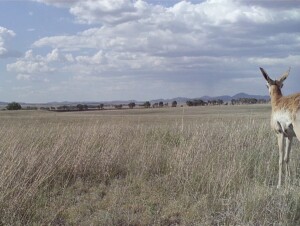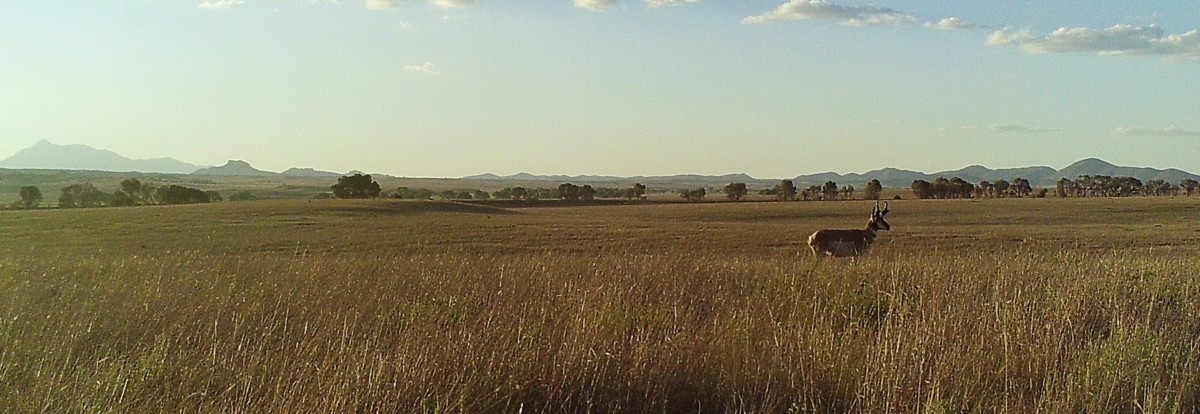The pronghorn (Antilocapra americana) is the last living member of the Family Antilocapridae, that roamed North American during the Pleistocene. While the pronghorn might look like antelope, their closest living relatives are the giraffe and the okapi in the African continent.
These unique animals have striking orange and white coats with dark noses and eyes. Males have large boney horns. However, a pronghorn’s horn is not like a bovine. Male pronghorn grow a black keratin sheath that is shed each year after the breeding season. However, they are not antlers because the core is bone and remains year-round. The pronghorn’s horns are just as unique as they are!
Pronghorn are native to open and arid regions of western North America, and can be found in grassland, sagebrush, chaparral, and desert environments. Living in such open environments, pronghorn are built to run. They have very large lungs for their body size and have a highly efficient respiratory system that allows them to intake large amounts of oxygen. Combined with specially adapted legs and joints, they are the fastest New World mammal. Their increased oxygen consumption also gives them to have incredible endurance allowing them to travel great distances.

Female pronghorn pauses with monsoon storms in the distance. This photo is a great example of how eyes on the sides of a prey animal’s heads allow them to see even behind them!
However, the adaptation in their legs that makes them excel at running forwards comes with the cost of not being able jump. While this has not affected their survival for thousands of years, in the age of barbed wire fencing, this limitation has stopped pronghorn in their tracks. Pronghorn migrate to find food and mates and fencing hinders their travels by being a barrier or causes physical harm as the pronghorn crawl under the barbed wire. We expect the border wall to completely block pronghorn travel between the U.S. and Mexico.
Luckily, conservation efforts to remove old fencing and installing barb-less wildlife friendly strands on fences are helping pronghorn to run freely once again. The Arizona Antelope Foundation just finished their annual survey of the pronghorn populations in southeast Arizona and found 218 individuals in Sonoita valley, and 31 individuals in the San Rafael valley, which is far more than the 9 they saw in 2012!
We at Sky Island Alliance are lucky to see pronghorn in Sonoita as we travel to our field sites, and we are very excited to have recorded images of pronghorn in the San Rafael State Natural Area as a part of our Border Wildlife Study. To be able to capture these unique and locally uncommon animals is truly a treat.

Male pronghorn crosses the San Rafael in the early morning hours. An ear tag is visible but not readable.

